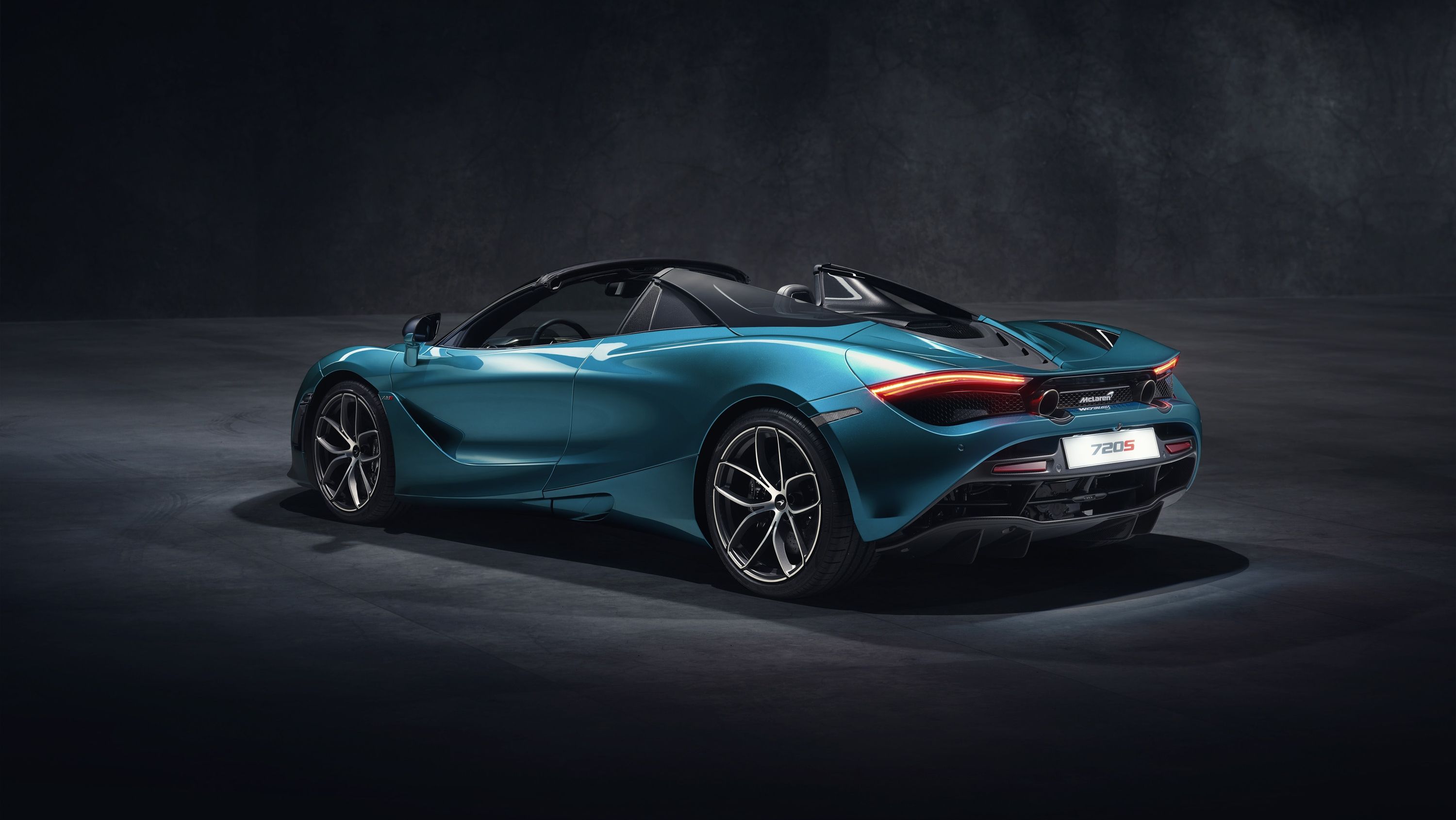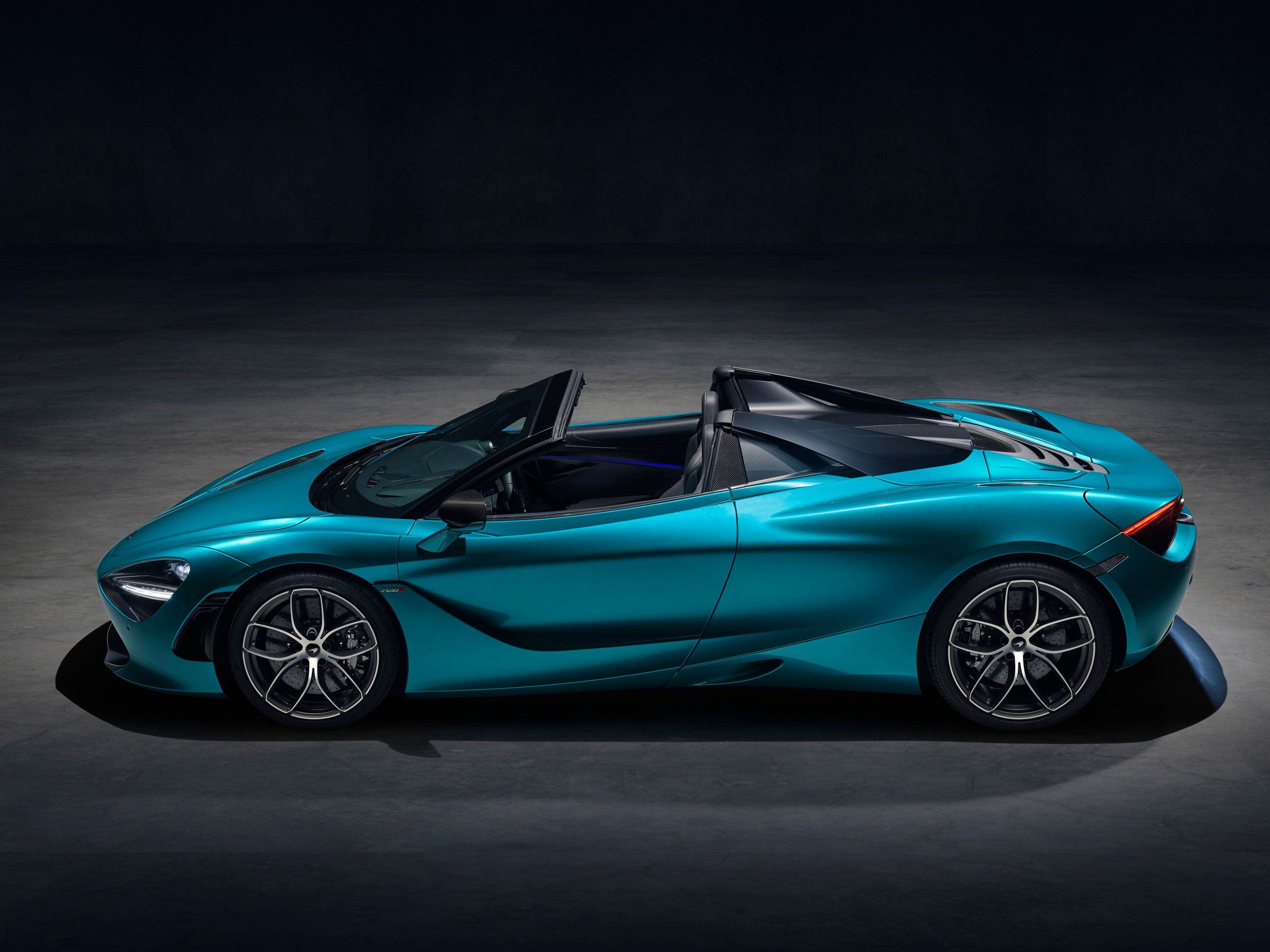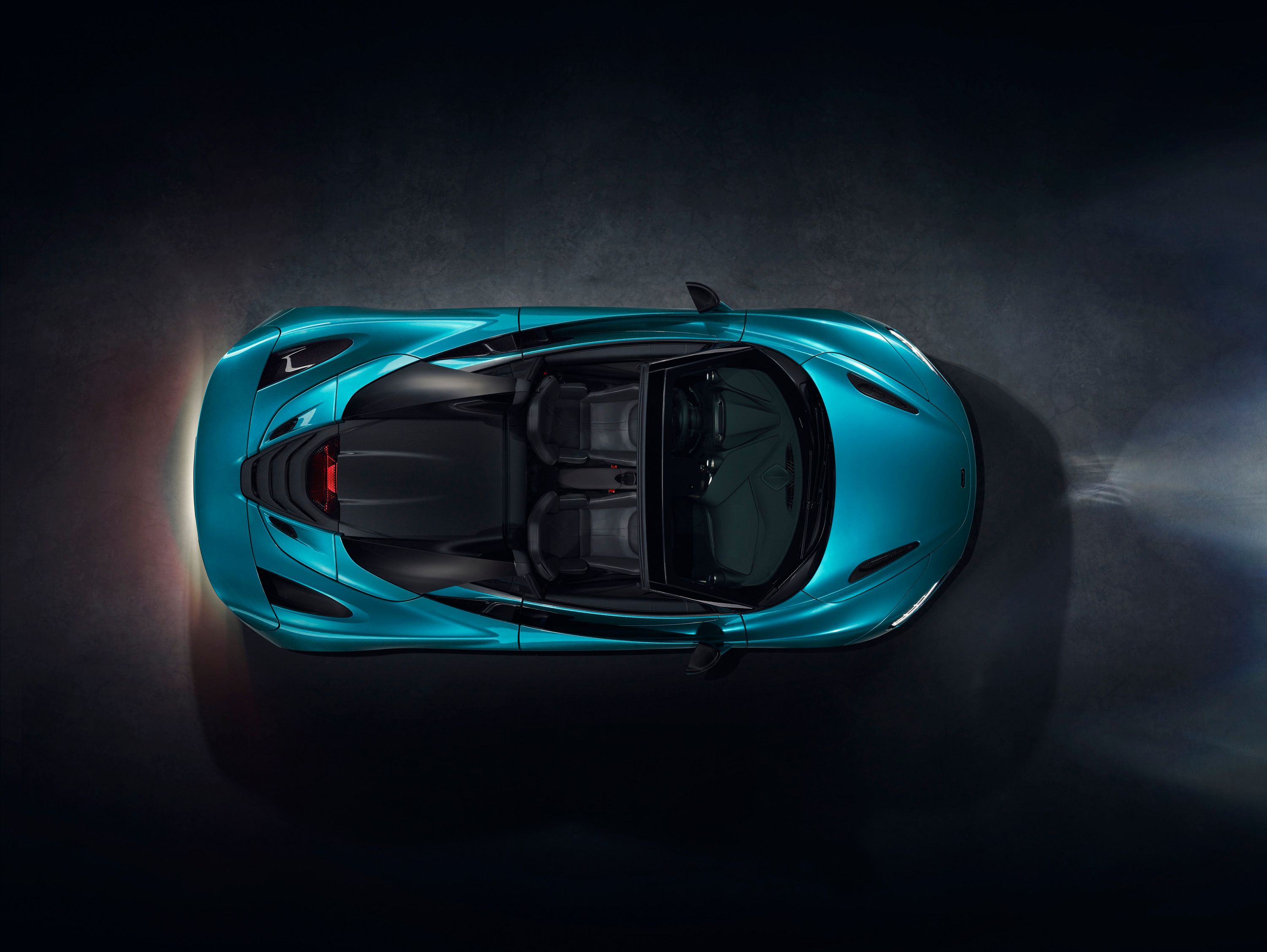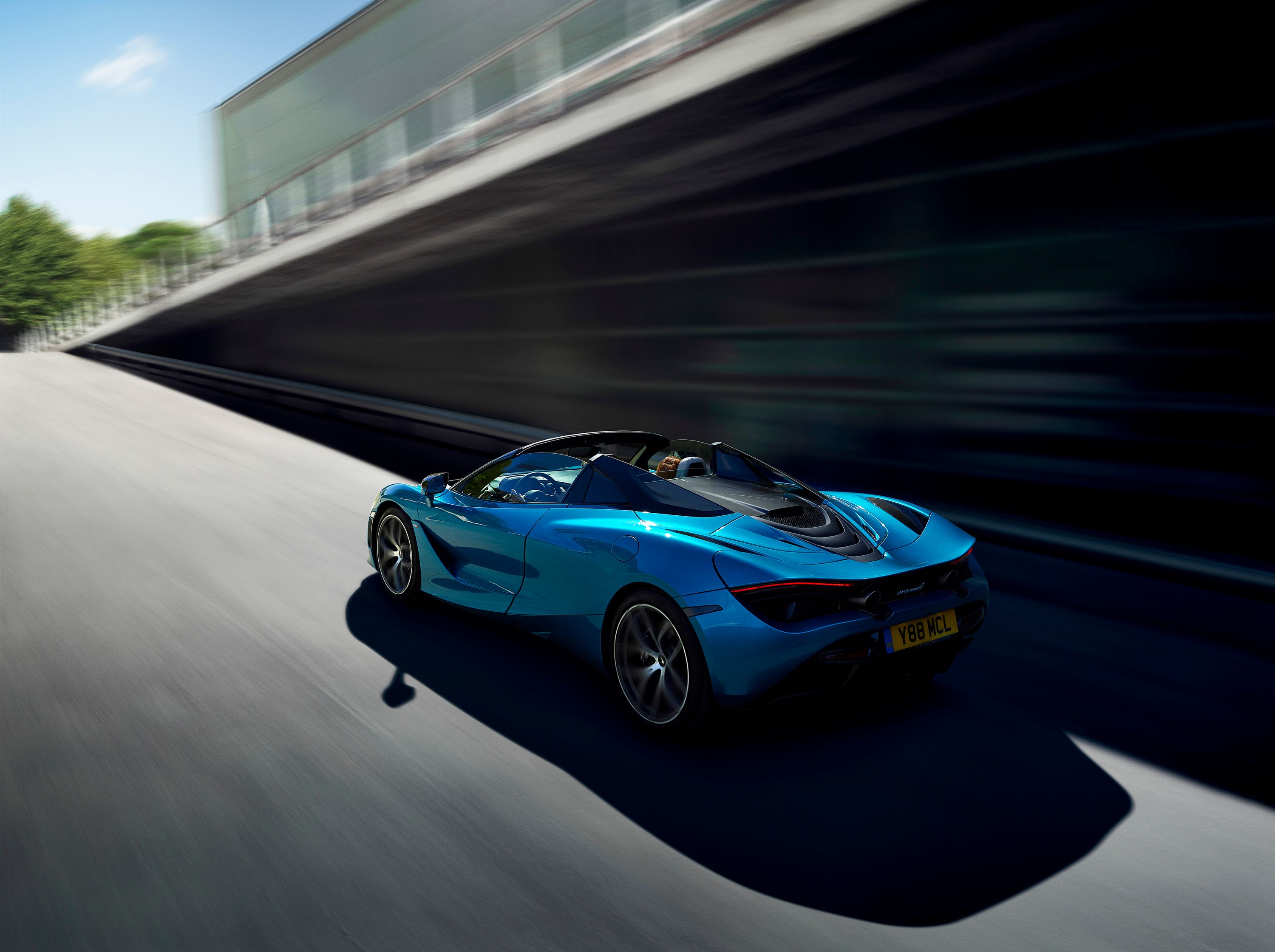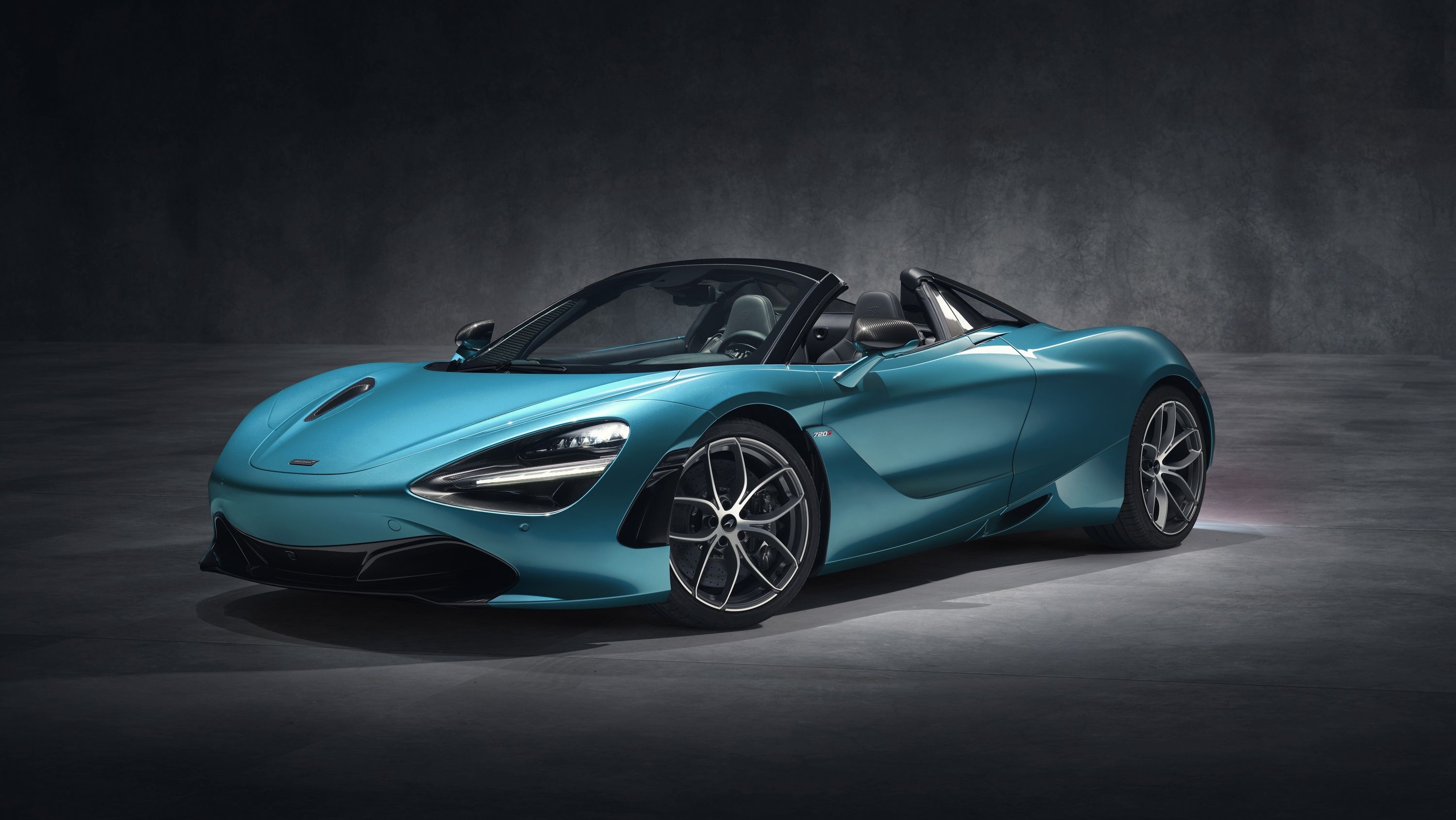McLaren has had a busy year with the respective launches of the track-focused Senna and the three-seater Speedtail. But 2018 isn’t done yet, so McLaren’s busting out another debut, this time for the “more affordable” 720S Spider. Despite its place in the “Senna-Speedtail” pecking order, the McLaren 720S Spider is lethal and potent in its own right. It has the same 4.0-liter, twin-turbocharged, V-8 engine as its coupe counterpart and produces 710 horsepower and 568 pound-feet of torque. More importantly, the 720S Spider isn’t as heavy as you’d think, especially with the complex roof system it’s carrying. McLaren is already taking orders for the 720S Spider, which carries a price of $315,000. Those who order from the British automaker should expect their supercars to arrive sometime in March 2019.
It’s easy to get lost in the shadows if you’re in the company of the McLaren Senna and the McLaren Speedtail. Those two machines are the crown jewels of McLaren’s current lineup, and any exotic, even one as potent as the 720S Spider, is going to have a hard time standing out on its own. But don’t sleep on the 720S Spider just yet. Even if it’s not in the league of both the Senna and Speedtail, it has plenty to offer at a fraction of the price compared to its two contemporaries.
Wanna know what the McLaren 720S’ secret weapon is? It’s the roof.
That’s really what this is all about. The Ferrari 488 Spider is the closest rival to the McLaren 720S Spider. It figures that when the British automaker was developing the supercar, it had the 488 Spider in its sights. That’s important because drivers can raise or lower the RHT roof at speeds of up to 31 mph. You know where we’re going here. That’s a huge increase from the 18.5-mph limit on the 650S Spider. It also happens to be higher than the 25-mph limit attached to the Ferrari 488 Spider.
There’s more to the McLaren 720S’ RHT roof than meets the eye, too. It’s also twice as quiet as in operation as the first-generation Super Series convertible. The setup also features a rear lower window that lowers automatically when the roof is opened. The window moves to an optimum position to minimize the airflow intrusion into the cabin.
By all accounts, the McLaren 720S is setting its sights on the Ferrari 488 Spider. It’s going to take more than a fancy new roof technology to completely upend the Italian stallion, but in this regard, it looks like McLaren has Ferrari beat. It’s no wonder that, given the mentioned performance statistics, McLaren has registered three worldwide patents for the roof system.
2019 McLaren 720S Spider Specifications
|
Engine configuration |
M840T engine, 4.0-liter twin-turbo V8, 3,994cc |
|
Drivetrain layout |
Longitudinal mid-engined, RWD |
|
Power bhp/kW @ rpm |
710/537 @ 7,500rpm |
|
Torque lb ft @ rpm |
568 @ 5,500-6,500rpm |
|
Transmission |
7 Speed SSG. Comfort, Sport and Track modes |
|
Steering |
Electro-hydraulic; power-assisted |
|
Chassis |
Carbon fibre MonoCage II-S monocoque, with aluminum front and rear crash structures |
|
Suspension |
Independent adaptive dampers, dual aluminum wishbones, Proactive Chassis Control II (PCC II). Comfort, Sport and Track modes |
|
Brakes |
Carbon Ceramic discs (Front: 15.3in Rear: 15in); aluminum calipers (6-piston front; 4-piston rear) |
|
Wheels (inches) |
Front: 9J x 19; Rear: 11J x 20 |
|
Tires |
Front: 245/35/R19 93Y; Rear: 305/30/R20 103Y |
|
Length, inches |
179 |
|
Wheelbase, inches |
105 |
|
Height, inches |
47 |
|
Width, with mirrors, inches |
85 |
|
Width, mirrors folded, inches |
81 |
|
Width, without mirrors, inches |
76 |
|
Track (to contact patch center), inches |
Front: 65.9; Rear: 64.2 |
|
Lightest dry weight, lbs |
2,937 |
|
3,236 |
|
|
Luggage capacity (DIN) |
Front: 5.3 cubic feet; Rear: 2cubic feet |
|
ACCELERATION |
|
|
0 -97km/h (0-60mph) |
2.8 seconds |
|
0-100km/h (0-62mph) |
2.9 seconds |
|
0-200km/h (0-124mph) |
7.9 seconds |
|
0-300km/h (0-186mph) |
22.4 seconds |
|
0-400m / ¼ mile |
10.4 seconds |
|
Maximum Speed (RHT raised/RHT lowered) |
212mph/202mph |
|
124mph – 0 braking |
4.6 seconds/387ft |
|
62mph – 0 braking |
2.8 seconds/99.4ft |
Further reading
Read our full speculative review on the 2019 McLaren 720S Spider.
Read our full review on the 2018 McLaren 720S.
Read our full review on the 2018 McLaren 720S Velocity.
Read our full review on the 2015 McLaren 650S Spider.

